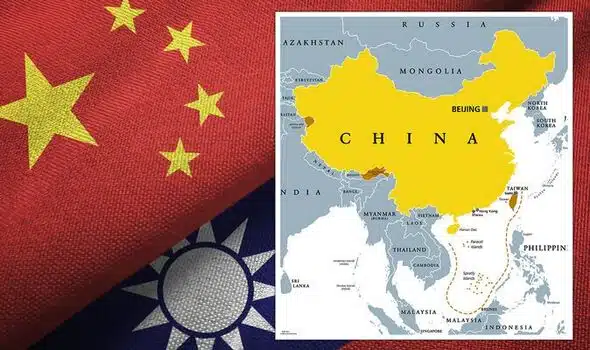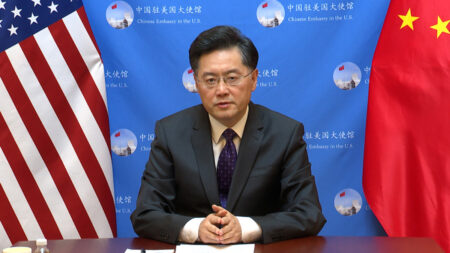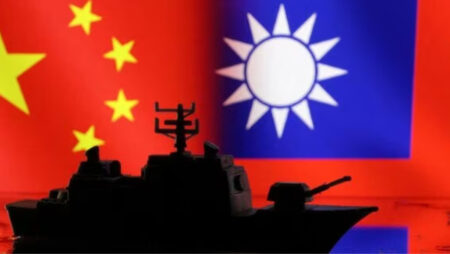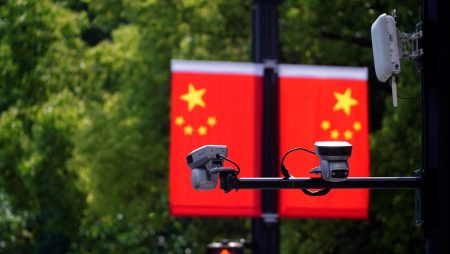On March 1, 2024, the defence ministry of Taiwan claimed that 19 J-10 fighter planes from China had been spotted in their air defence zone in the past 24 hours.
Background
Referring to the activity as “continuous oppression” by Beijing, the defence ministry asserted that 19 Chinese air force fighter planes had sortied into the southwestern corner of the air defence identification zone (ADIZ) of the island. As per the map released by the ministry, this part of the island is closer to the coast of the country than to the island itself. The forces of Taipei monitored this incursion and sent their aircraft, but their flight was limited to the sensitive median line of the Taiwan Strait, which has been an unofficial barrier between Beijing and Taipei, but the Chinese air force has been soaring over it almost daily since August last year. Since the Chinese aircraft were flying over the ADIZ of the island rather than its territorial airspace, no shots have been fired.

History Of Conflict
According to some historical sources, China fully acquired the island for the first time in the 17th century under the administration of the Qing dynasty. When the country lost the first Sino Japanese war in 1895, control over the island was gained by Japan, which was re-acquired by the former after Japan lost World War Two in the year 1945. But this time, a civil war dehisced in mainland of the country between the Communist Party and the nationalist government forces led by Mao Zedong and Chiang Kai-shek, respectively. In 1949, the communists won the war and dominated Beijing. Chiang Kai-shek and the people of the nationalist party, or the Kuomintang, fled to the island and began to rule for several decades. Beijing stresses on their belief that, since the beginning, the island has been a province of China, which is negated by their counterpart, who argue that modern China was established in 1949 under Mao and that the People’s Republic of China thus originated after the revolution of 1911.

Pelosi’s Visit To Taipei
On August 2, 2022, Nancy Pelosi, the U.S. House of Representatives Speaker, landed in Taipei along with her delegation on a U.S. Air Force transport plane. The plane arrived at Songshan Airport in downtown Taipei after taking-off from Malaysia. They were received by Sandra Oudkirk, the top U.S. representative in Taiwan, and Joseph Wu, the foreign minister of the island. Pelosi said this trip symbolises an unwavering commitment by the U.S. to the island. Beijing marked this high-level visit as a threat to the stability and peace in the strait. This visit ignited the deteriorated relations between Beijing and Taipei.

Defend By Taipei
In the event of any military confrontation, the armed forces of Beijing would have dominated the impact on Taipei. From missile technology to cyberattacks, aircraft and naval power, the country spends exceptionally on its defence and possesses a huge range of capabilities. The 2024 defence budget is expected to share 2.4 percentage of gross domestic product (GDP) of the island and surge up to US$18.31 billion. Clearly, there is a huge disequilibrium, as China preceded the U.S. with a military budget of US$230 billion in 2022. According to western experts, second to none, Taiwan could laggard a Chinese attack with their current capability of defence armour.

Importance Of The Island
The Taiwan Semiconductor Manufacturing Company, or TSMC, dominates over half of the global semiconductor chip market. At present, the island is the 9th largest goods trading partner with $90.6 billion, including an export of $30.2 billion and an import of $60.4 billion in 2020. It is situated at the concurrence of the Philippines Sea, South and East China Sea, at the southwest of the Japanese Island Chain, and is near Okinawa. An estimated 90% of Korean, Japanese, and Chinese trade passes towards Asia, the Middle East, and India through the Taiwan Strait. As the economy of Beijing rely upon its export, acquiring control over the island would mean an absolute control over its trade route.














